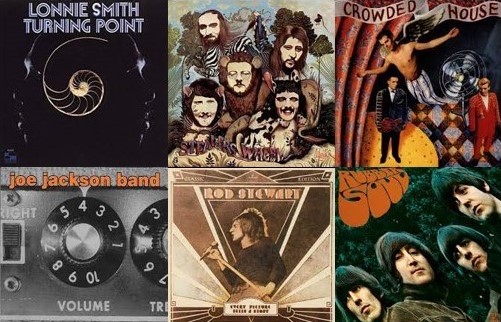Until recently, I had never heard of JohnRose. Then, prompted by a post from fellow blogger Lisa from Tao Talk, I checked out Spotify’s Release Radar and came across a song called The Curtains Are Falling. Not only did the neat music catch my attention, but I also noticed the artist’s slight German accent. My curiosity led me to his website and new album The Prophet’s Dance, released on December 8. I love to discover new music that way!
JohnRose is the moniker of German musician and multi-instrumentalist Johannes Rösgen who hails from Koblenz. The small city on the banks of the Rhine is located only one car hour away from where I grew up. In a recent radio interview, Rösgen said his music career started as a 13-year-old guitarist when he formed a school band with a childhood friend. That was back in 1976. Subsequently, he played in various prog and rock cover bands, including Copyright who released an album in 1999. From 2014 to 2017, Rösgen also fronted Giant For A Day who notably opened for Manfred Mann’s Earth Band and Alan Parsons.
Rösgen started JohnRose in 2015 and released his debut album under that name, Behind the Gates, the following year. Three additional albums have since appeared, including his latest, The Prophet’s Dance. The “Rock Poet from the Middle Rhine” describes his music as rooted in ’70s prog rock, melodic rock and art rock, naming Manfred Mann’s Earth Band, Alan Parsons, Toto, Genesis, Pink Floyd, Kate Bush, Gerry Rafferty und Al Stewart as influences.

A press statement notes Rösgen for the most part self-played, recorded and mixed The Prophet’s Dance at a studio close to Koblenz. Out of curiosity, I reached out to Rösgen who kindly confirmed he handled all guitar and keyboard parts. Initially, he also had programmed drums but ultimately decided to ask a friend to play drums. Rösgen also noted two members of his touring band, Paul Wydymanski (bass) and Robert Thomas (keyboards), played on the track Lovers Are Strangers. Paul Bednarek (guitar) and Jens Müller (drums) complete the group’s line-up.
The album’s mastering was done by Stefan Noltemeyer in Berlin. The German producer, musician, sound engineer and published book author previously mastered albums by the likes of Meat Loaf, Santana, Earth Wind & Fire and Toto. I’d say it’s time to take a closer look at some of the songs on The Prophet’s Dance.
The album opens with Calling For You, which is about the longing for responsible political leaders and ultimately the key role people play by voting them in and out of office – at least in a democracy. It’s quiet obvious what prompted the song. With autocratic leadership tendencies on the rise globally, sadly, Calling For You couldn’t be more timely. The song first appeared on October 19, 2023 as the album’s third upfront single.
Manner of Travelling, a catchy pop rocker, is among my early favorites on the album. The description accompanying the YouTube clip explains the upbeat song is “about finding one’s happiness and thus setting one’s own pace in the rhythm of life.” Rösgen’s website adds the song was inspired by a poster he came across in a photo album, which read “Happiness is not a station you arrive at but a manner of travelling.” Manner of Travelling was initially released on August 17, 2023 as the album’s second upfront single.
Around the Lake recalls Rösgen’s frequent walks with his father who suddenly passed away at age 47 when he was only 18 years old. “I couldn’t say goodbye to him and continued my life without him,” Rösgen said. “My memory of him is that the two of us often went for walks together around a lake in my home country and had conversations that, among other things, also prepared me for life as an adult. At some point, I realized that I missed these conversations and that they gave me stability at the time. During my lifetime, memories caught up with me, and I longed to go around the lake with him again.” The touching song premiered on June 14, 2023 as the album’s first single.
This brings me to the cool title track, which first appeared on November 30, 2023 as the fourth upfront single. The song “metaphorically takes the in-depth perspective of a whale as a prophet,” according to the description accompanying the stunning YouTube video. “The contemplative and emotional song reveals a hidden underwater world where whales spend more time playing, dancing and singing than foraging for food, and invites us to pause and turn back.”
The final track I’d like to call out is the album’s closer Let Love Shine. The pop rock song about one lover telling another lover to become partners provides a upbeat ending to a great-sounding album.
When reaching out to Rösgen, I also asked him what’s next. He told me this year he predominantly wants to focus on performing his music live – something he was hardly able to do in 2023 because of the new album – understandably so. Rösgen also hopes to reach more folks who like his music. Last but not least, he’s already writing and recording new songs. I certainly look forward to hearing more music from him. Meanwhile, here’s a Spotify link to The Prophet’s Dance. Hope you dig it as much as I do!
Sources: JohnRose website; YouTube; Spotify




